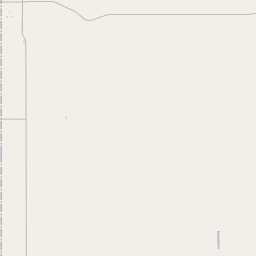Darrouzett Cemetery
Historical marker location:






The community of Darrouzett began in 1917 as a station along the Panhandle and Santa Fe Railway. First named Lourwood, the early settlement was renamed by the rail company in honor of a Galveston-area legislator and attorney, J.L. Darrouzett. When the town incorporated in 1920, the year of the rail line's completion, more than 400 people lived in Darrouzett and supported several businesses, a school, two churches and a post office. Early residents used family cemeteries and graveyards in other communities for burials.
In 1939, Anna Frass and her family deeded several acres to the trustees of the newly formed Darrouzett Cemetery Association. She moved the graves of Henry Frass (d. 1932), her late husband, and granddaughter Esther Lee Frass (d. 1926) herre from Lipscomb, and other families also reinterred loved ones here. The first burial at the cemetery was that of David Rush in January 1939. Rush, a local farmer and businessman, is one of the numerous military veterans buried here; others include two men killed in action in Vietnam. Each grave at the cemetery is a reminder of individuals who contributed to Darrouzett history.
Historic Texas Cemetery - 2005
As one of the most visible programs of the Texas Historical Commission (THC), historical markers commemorate diverse topics in Texas history, including: the history and architecture of houses, commercial and public buildings, religious congregations, and military sites; events that changed the course of local and state history; and individuals who have made lasting contributions to the state, community organizations, and businesses.
The Texas Rangers, a famous law enforcement agency, were first organized in 1835 to protect settlers from Native American attacks.
The county's early settlers faced numerous challenges, including harsh weather conditions, limited resources, and conflicts with Native American tribes. Many early pioneers were drawn to the area for its fertile soil and opportunities for cattle ranching. The arrival of the railroad in the late 1800s brought further growth and development to the county.
During the early 20th century, Lipscomb County experienced a boom in agriculture, with cotton and wheat becoming the primary crops. The discovery of oil in the area in the 1920s brought a new wave of prosperity and economic growth. The county saw an increase in population and the establishment of new businesses.
Today, Lipscomb County remains largely rural, with agriculture and oil production continuing to be significant industries. The county's rich history is celebrated through various historical sites and museums, which preserve the stories and heritage of the early settlers who shaped the area.
Lipscomb County Timeline
This timeline provides a glimpse into the major events and milestones that have shaped the history of Lipscomb County, Texas.
- 1876 - Lipscomb County was established on August 21, becoming the last of the 254 counties in Texas.
- 1887 - The town of Lipscomb, which would later become the county seat, was founded.
- 1902 - The Northeast Texas Panhandle was opened up for settlement, leading to an influx of farmers and ranchers into Lipscomb County.
- 1907 - The Chicago, Rock Island and Gulf Railway established a line through Lipscomb County, boosting transportation and economic development in the area.
- 1911 - Lipscomb County's first courthouse was built in Lipscomb.
- 1920s - The oil boom hit the Lipscomb County area, bringing prosperity and economic growth.
- 1926 - The town of Lipscomb was incorporated.
- 1940s - The oil industry continued to thrive, and agriculture remained a significant part of the county's economy.
- 1969 - The Lipscomb County Courthouse, which served as the county seat, was destroyed in a fire.
- 1970 - The current courthouse in Lipscomb was built, serving as the county seat.